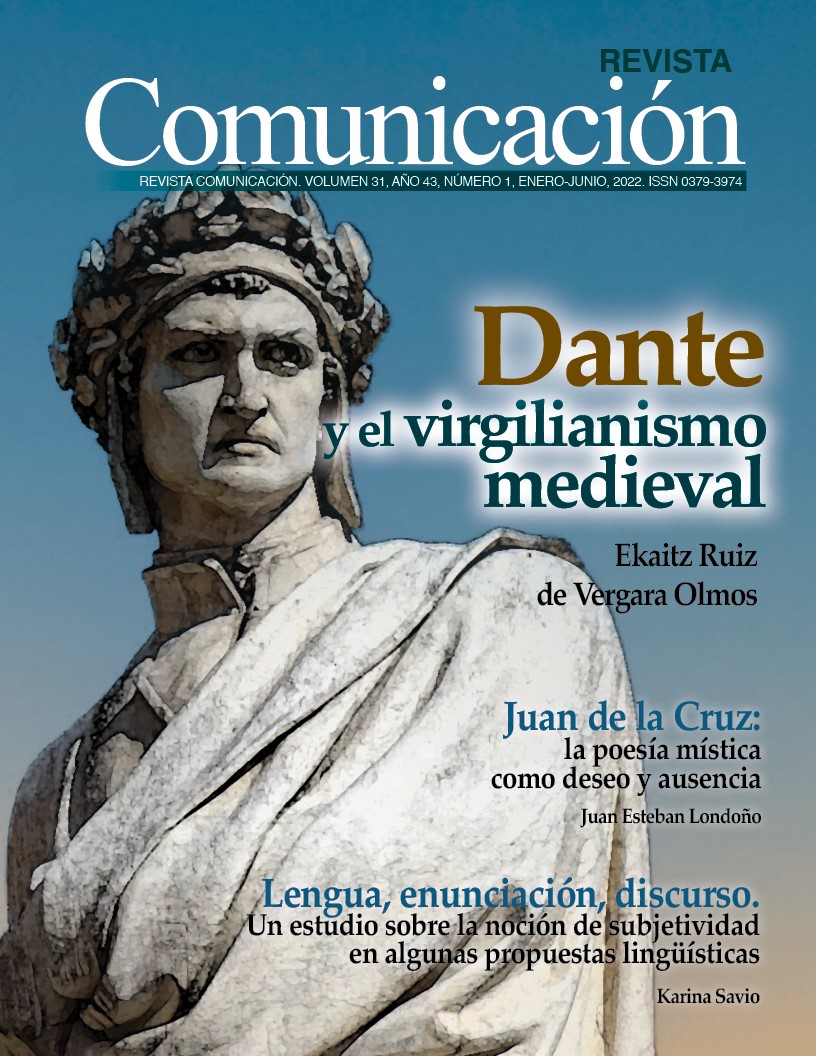Dante and Medieval Virgilianism
Main Article Content
Abstract
The conceptualization of the relationship between Virgil and Dante has been one of the most investigated topics in classical tradition and comparative literature studies. The view that has prevailed since the nineteenth century is that of Domenico Comparetti, the coiner of the concept of “classical tradition”, who claimed that Dante had “purified” the popular and legendary image of Virgil. But throughout the twentieth century, other critical perspectives have also been practiced that differ from the scheme proposed by Comparetti. In this article, we analyze medieval Virgilianism: the aesthetic, philosophical, and theological trends that presented certain images of Virgil in the Middle Ages. Dante's Commedia can be explained as a synthesis of the main trends of medieval Virgilianism. Dante considers Virgil a mentor, but in a certain way, he also considers him a heathen author to whom he submits a critical judgment. The conclusion is that Dante is capable of unifying the prophetic vision of Virgil in his poem, held by ecclesiastical authors with the legendary vision of the popular tradition that represented the Mantuan poet as a kind of magician or soothsayer.
Article Details

This work is licensed under a Creative Commons Attribution-NonCommercial-NoDerivs 3.0 Unported License.
Política de acceso abierto
Esta revista provee acceso libre inmediato a su contenido bajo el principio de que hacer disponible gratuitamente investigación al público apoya a un mayor intercambio de conocimiento global.
Ser una revista de acceso abierto, implica que todo el contenido es de libre acceso y sin costo alguno para el usuario o usuaria, o institución. Las personas usuarias pueden leer, descargar, copiar, distribuir, imprimir y buscar los artículos en esta revista sin pedir permiso previo del editor o el autor con fines educativos y no de lucro.
La única limitación de la reproducción y la distribución, y el único papel de los derechos de autor en este ámbito, debe ser dar a los autores el control sobre la integridad de su trabajo y el derecho a ser debidamente reconocidos y citados. (Budapest Open Access Iniciative)
LICENCIAMIENTO Y PROTECCIÓN INTELECTUAL
Todos los artículos publicados, están protegidos con una licencia Creative Commons 3.0 (Creative Commons Reconocimiento – NoComercial – SinObraDerivada) de Costa Rica. Consulte esta licencia en: http://creativecommons.org/licenses/by-nc-sa/3.0/cr/
Las licencias constituyen un complemento al derecho de autor tradicional, en los siguientes términos:
- Se impide la obra derivada (es decir, no se puede alterar, transformar ni ampliar el documento).
b. Siempre debe reconocerse la autoría del documento referido.
c. Ningún documento publicado en la Revista Comunicación, puede tener fines comerciales de ninguna naturaleza.
Mediante estas licencias, la revista garantiza al autor que su obra está protegida legalmente, tanto bajo la legislación nacional como internacional. Por tal motivo, cuando sea demostrada la alteración, la modificación o el plagio parcial o total de una de las publicaciones de esta revista, la infracción será sometida a arbitraje internacional en tanto que se están violentando las normas de publicación de quienes participan en la Revista y la Revista misma. La institución afiliada a Creative Commons para la verificación en caso de daños y para la protección de dichos productos es el Instituto Tecnológico de Costa Rica, mediante la Editorial Tecnológica y la Vicerrectoría de Investigación.
References
Ruiz de Vergara, E. (2022). Dante y el virgilianismo medieval. Revista Comunicación, 31(1), 5-19.

